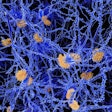
In groundbreaking research, scientists at Duke University have developed an RNA-based probe that can target individual cells as opposed to just genes and then add a protein to them to change their function.
The researchers contend that this tool could become a key technique in managing disease by simply modifying cells and their functions. It would offer a disease management tool that currently does not exist.
“We’re excited because this provides a simplified, scalable, and generalizable technology to monitor and manipulate all cell types in any animal,” said neurobiologist Z. Josh Huang, who led the research, in a published statement. “We could actually modify specific types of cell function to manage diseases, regardless of their initial genetic predisposition. That’s not possible with current therapies or medicine.”
In research published this week in Nature, the team leveraged the ADAR enzyme, which resides in the cells of every animal. The ADAR enzyme has led the researchers to dub their approach CellREADR (cell access through RNA sensing by Endogenous ADAR). CellREADR is a customizable string of RNA that consists of three parts: a sensor, a kind of stop sign, and a set of blueprints.
In operation, the researchers first choose a specific cell type for investigation and then identify the target RNA that is produced by that particular cell. It is the use of this signature RNA for each cell that gives the tool its tissue specificity.
The sensor part of CellREADR is designed as the target RNA’s complementary strand. The sensor probe is based on the inherent ability of one piece of RNA to be attracted to another piece of RNA that has matching molecules.
With this capability, the sensor probes into the cell and finds its target RNA sequence, at which point they join together to form a piece of double-stranded RNA. It is this new RNA structure that triggers the ADAR enzyme to examine it and then change a single nucleotide of its code.
In addition to being found in all animal cells, the ADAR enzyme is a cell-defense mechanism that edits double-strand RNA when it encounters it.
The stop sign element of the CellREADR also leverages the same specific nucleotide edits that the ADAR enzyme made in the double-stranded RNA. The stop sign prevents the protein blueprints from being built. The stop sign is only removed once the CellREADR’s sensor docks to its specific RNA sequence.
The technique demonstrated spectacular success in its first iterations, according to the researchers. In these experiments, CellREADR accurately labeled specific brain populations in living mice, as well as adding activity monitors and control switches where directed. This took the form of fluorescent tags inserted into cells to label specific types of brain tissue, placing a light-sensitive on/off switch to silence or activate neurons of the researchers' choosing, and even introducing a self-destruct enzyme to precisely eliminate some cells but not others.
“With CellREADR, we can pick and choose populations to study and really begin to investigate the full range of cell types present in the human brain,” said coauthor Dr. Derek Southwell, PhD, a neurosurgeon and assistant professor in the department of neurosurgery at Duke, in a prepared statement.



















